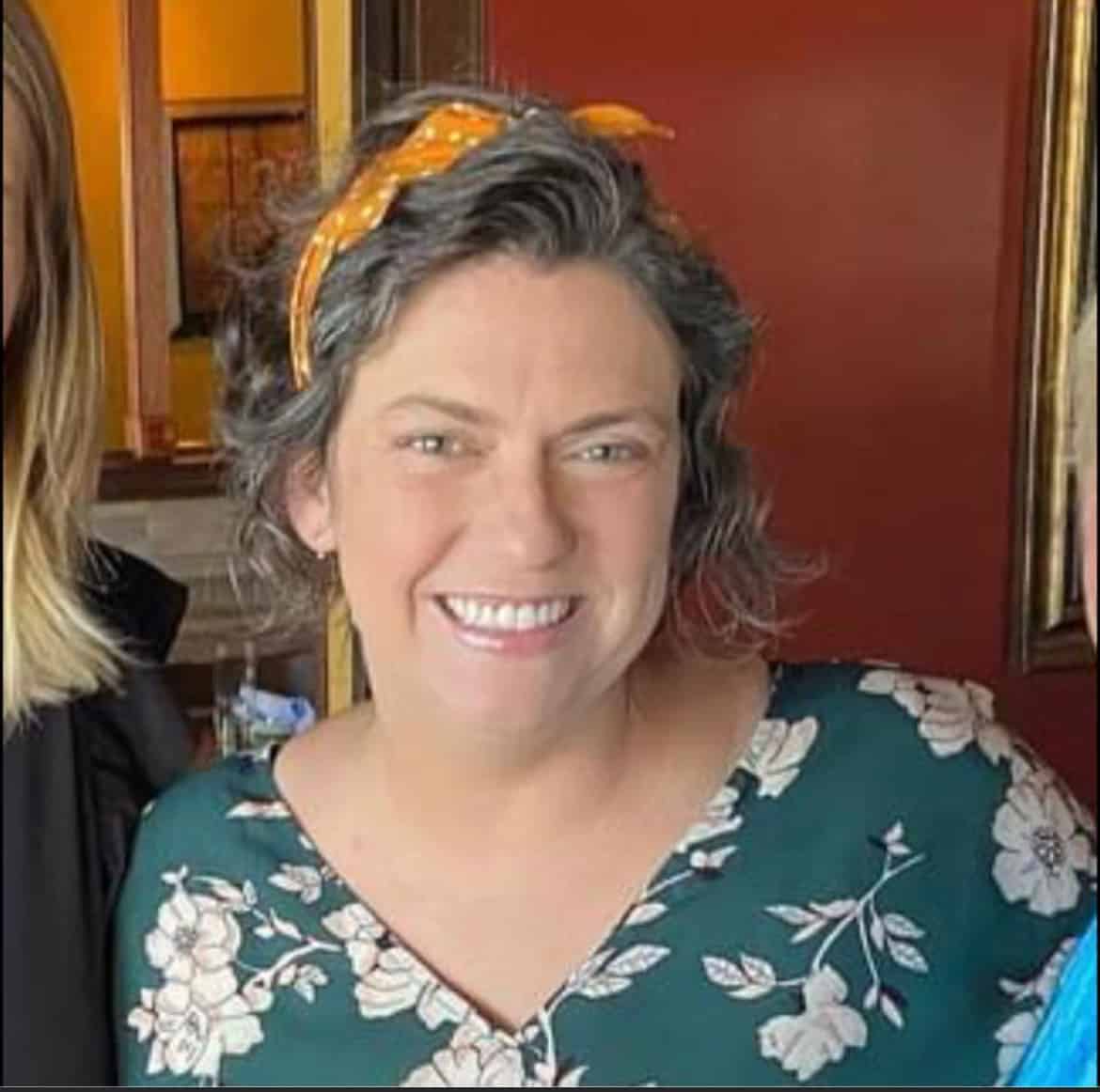This post is a 2-hour self-guided tour of things to see in the eastern half of Georgetown in Washington, DC.
While you haven't officially left Washington, D.C., it sure feels like you have. Founded in 1751 as the Town of George, this was a small tobacco inspection port in the colony of Maryland.
We hope you're enjoying this self-guided tour in addition to our Historic Georgetown Walking tour, which explores the waterfront and western/central parts of Georgetown. The neighborhood has so much history it is hard to cover in one tour!
If you're interested in more about the beginnings of this once independent city turned neighborhood and the architecture of the buildings you see, join us for one of our 2 hour guided walking tours.
This East Georgetown self-guided tour will explore both the historically black-American part of Georgetown and also the exorbitantly wealthy part where you'll see some of the largest residences.
The tour ends near the C&O Canal and not far from where we start our Historic Georgetown tour.
Enjoy your self guided tour? Make a donation to help support the guides. You can Venmo @canden-ftbf or Buy Me A Coffee: https://www.buymeacoffee.com/dcbyfoot
2706 Olive St NW
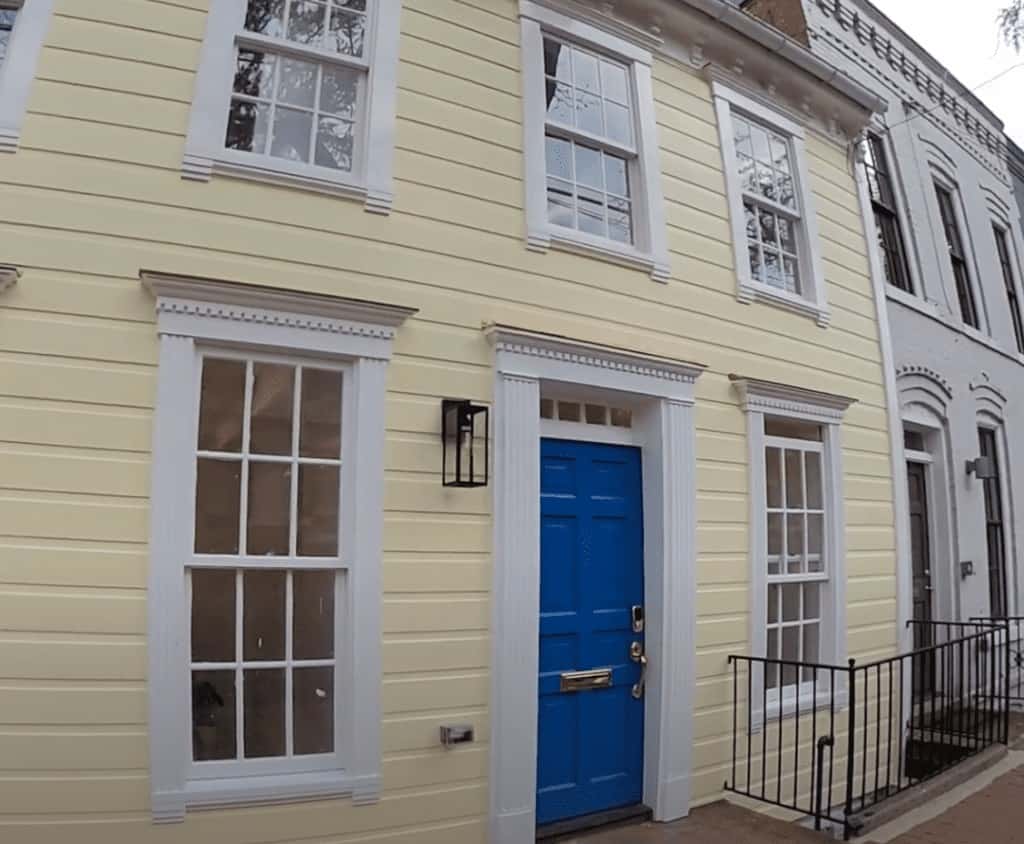
This house at 2706 Olive St NW is the color of butter, which is fitting for its most well-known owner. This was the home of Julia Child and her husband, Paul.
Though they purchased the house in 1948, it wasn't until the moved back in after time overseas that they really lived there. While in France, Julia had taken cooking classes and it was at this house that she began to put those skills to use.
Hosting cooking classes for neighborhood ladies, including the likes of Katherine Graham. Husbands were allowed to sample the dishes on two conditions.
They could make no complaints and had to clear their plates! In 1959, the couple moved to Cambridge, Mass. and the famous stove she had installed in the kitchen was moved with them - but now it can be seen downtown at the American History Museum.
Aside for its famous resident, the house has its own unique story. It was built in 1870 by a black-American carpenter, Edgar Murphy. This being shortly after the American Civil War, it was unusual that he would have the funds to build this four bedroom house.
This eastern half of Georgetown was colloquially known as Herring Hill, due to the number of Herring in nearby Rock Creek.
A prominent black-American neighborhood, many of the homes were built around this time and the neighborhood grew into a thriving black-American community.
Continue around the corner up 27th St NW and take your second left onto Dumbarton Street NW. The next stop will be halfway on your left.
2720 Dumbarton Ave NW
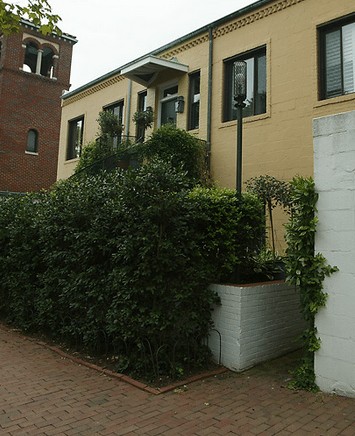
This was built as a modern home in 1949 leaving the nearby residents of Georgetown aghast. Bucking tradition of copying more historic styles with flat fronts, triangle pediments or Americana motifs, Joseph Alsop, famed columnist, decided to try his hand at architecture.
It is a lot larger than it looks with at least 6 bedrooms, five baths, a swimming pool and a luxurious garden that is often included on home and garden tours.
The Alsops were Georgetown royalty and hosted lavish parties and salons at this home. It was here that JFK retired after his 1961 inaugural balls for a nightcap - whether that was a bowl of soup, a glass of champagne or a secret liaison with Angie Dickenson depends on who you ask.
Alsop was a writer and columnist, best known for his thrice-weekly piece, "Matter of Fact."
Backtrack to 27th Street to the church on the corner of 27th and Dumbarton Street NW.
First Baptist Church of Georgetown
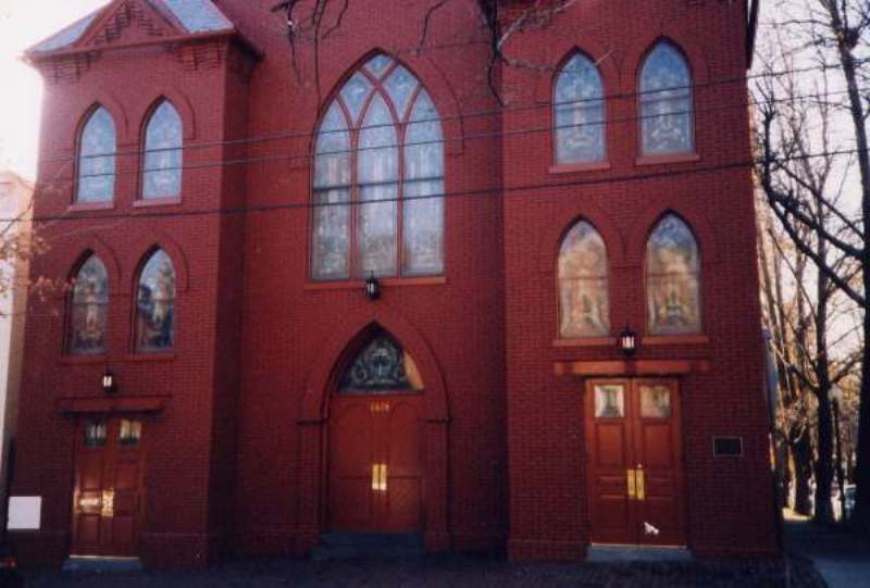
When Reverend Sandy Alexander, a former enslaved person, arrived in Georgetown in 1856 he found there were only 2 Baptists. Eventually, the congregation grew and in 1882 the cornerstone of this building was laid. The foundations were dug by church members themselves throughout the night.
When the receipt was written after making the first loan payment, it was addressed to the First African Baptist Church. The trustees refused to accept this for they were indeed the First Baptist Church in Georgetown, race aside.
As Georgetown has grown and developed over the years, many of the older families have been forced out with higher land values and rents.
As can be seen with many churches in the neighborhood, many of the congregation no longer live nearby but commute in on Sunday mornings.
The church is bordered by the grassy park, make your way to a shady spot in the park for our next stop.
Rose Park Recreation Center & Tennis Courts
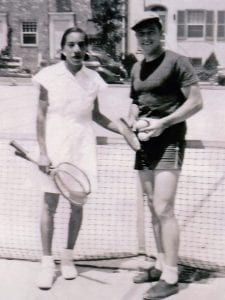
Designated as a recreation area on donated land, Rose Park was created in 1918. It was used by members of the community, regardless of the race until 1945. A sign was posted that read "For Colored Use Only."
That sign lasted about a day. Residents, white and black, protested this designation and ignored it. The city would eventually acknowledge and claim that DC had one of the first integrated parks, but it was never the city's doing.
The tennis courts have seen its fair share of integrated games as well. In the 1940s, you may have seen a game between a handsome white serviceman who was stationed nearby against two local black sisters who lived nearby.
Gene Kelly, actor and dancer from films such as An American in Paris (1951), Anchors Aweigh (1945), and Singin' in the Rain (1952) often practiced with the Peters sister.
Margaret and Roumania Peters might not have the name recognition of Gene Kelly to today's audience, but these two women were the original Williams sisters.
Cross 27th Street and head down O Street NW, a few houses in on your left you'll see 2710.
2710 O St NW
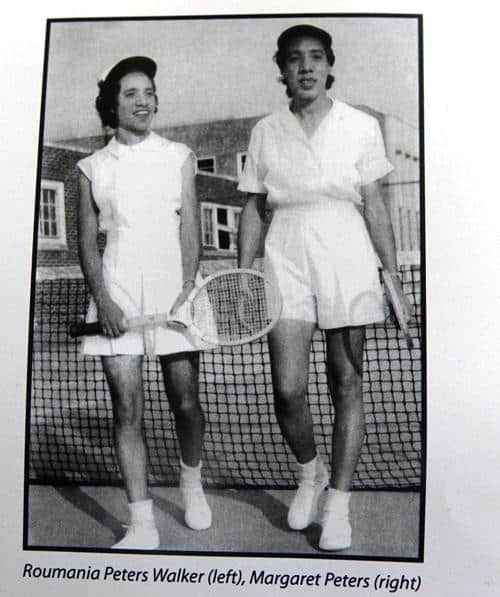
Nicknamed Pete and Repeat, the Peters sisters were tennis greats in a time when women and black-Americans were not always welcomed in the sport.
The tennis courts you saw at the last stop in the 1930s were sand, rock, dirt and had to be cleared by hand and relined before you could start a game.
The sisters competed in the American Tennis Association, which was created to give black-Americans a chance to play and compete in an era when they were not allowed to compete against white-American players.
As amateurs, the sisters had to provide their own equipment and transportation. In the 1930s through 50s, the sisters set records with the doubles performance and would earn degrees in Physical Education from Tuskegee University and later Masters Degree and would both teach.
You may have heard the name Althea Gibson, who won straight titles from 1947-1956 and was the first black-American to compete in integrated tennis.
She lost in 1946 to Matilda Roumaina Peters, who was the only black-American woman to ever beat Gibson!
Continue up 27th St NW. This block has some of the best photographic angles for the multi colored row houses. Turn left onto Q St NW.
Dumbarton House

If you're standing on the sidewalk looking at the house, you're actually standing in the original location of this home. When the bridge over Rock Creek was built they needed to extend Q St to meet it. This house was placed upon logs and moved up the hill by about 50' to allow for the road.
Dumbarton House as its called today was completed around 1800. The original land grant for what is today Georgetown was given to a Scotsman named Ninian Beall who called is the Rock of Dumbarton after a location in Scotland. That is why you have so many things named Dumbarton around here.
In 1814, during the War of 1812, when the British were setting downtown Washington DC ablaze, it was to this house that First Lady Dolley Madison escaped, with the famous Gilbert Stuart portrait o George Washington and the White House drapes. Today it is a historic house museum and one of the best in the city.
We highly recommend stopping for a visit and tour inside if hours allow.
Keep walking down Q St NW and turn right on 28th St NW.
Evermay
This beautiful house is set back from the road and may be hard to see - but don't walk up the drive way. This is a private house and that tradition dates back to the very beginning. Built around the turn of the 19th century by Samuel Davidson, Evermay was not a welcoming abode.

When the house was near completion, Mr. Davidson put an ad in the local papers to introduce himself to the neighborhood.
In this letter he encouraged his neighbors to "avoid Evermay as you would a den of evils or rattlesnakes." and warned them that his "man, Edward, has orders to protect the home with aid of ... hatchet, shotguns, blunderbuss, steel traps and grass snakes." Let's just say he was the original "Not In My Back Yard" kind of neighbor.
As you walk up 28th Street you'll begin to see Oak Hill Cemetery on your left. Stop as the road turns and look for the obelisk behind the fence, that is the grave of Edwin Stanton, Secretary of War under Abraham Lincoln. Keep walking along until you get to the main gate.
Oak Hill Cemetery

W.W. Corcoran established Oak Hill Cemetery in 1848 and is a beautiful example of a garden cemetery. You'll find locals reading newspapers on benches and taking strolls through the 22 acre grounds.
The small chapel you see is the Renwick Chapel, named after the famed architect James Renwick. His work can be see downtown at the Renwick Art Gallery or up in NYC at St. Patrick's Cathedral. It is the only example of Gothic architecture in Georgetown.
You can wander the cemetery if it is open and the gatehouse has self guided tours.
Within the walls, you'll find the final resting place of the Grahams, Edwin Stanton, Ben Bradlee, and this was the temporary resting place for Willie Lincoln, who died during Lincoln's presidency.
Head just across the street. You'll see a gravel driveway leading to a house set back from the road.
2920 R St NW
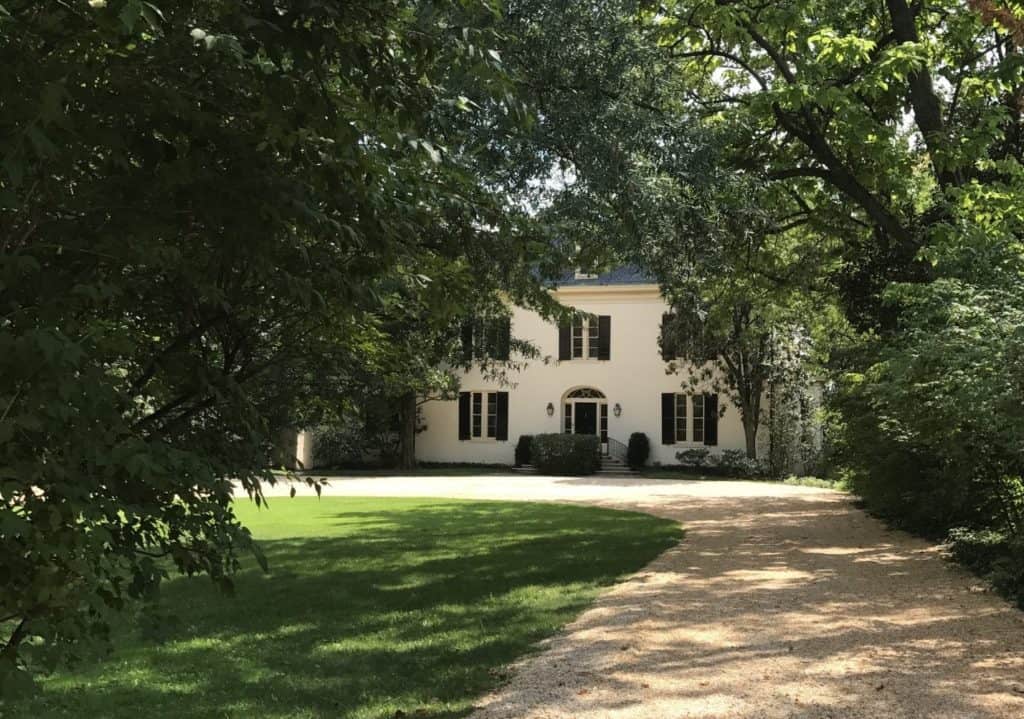
As of 2017, no one is actually living in this house due to disputes between neighbors on renovations and expansions. This is the Beall-Washington House, a name fitting for one of the grand 19th century estates here in upper Georgetown.
Washington, for a descendant of George Washington who married into the Beall family, descended from the original landowner of Georgetown, Ninian Beall.
It was previously owned by the Grahams, Katherine and Peter, who were editors of the Washington Post. Living here for decades, some of the most elaborate parties that included "the Georgetown set" of well known and well to do were held at this house.
Before the Grahams, it was home to Wild Bill Donovan. He was head of the O.S.S. - Office of Strategic Services, the precursor to the CIA. It was while working with the OSS that Julia met Paul Child.
She would likely have attended some of Wild Bill's parties. The OSS was often mocked in the press and called Oh! So Social.
If you'd like to take a side trip, we highly recommend continuing down R St NW to Dumbarton Oaks. It has a great museum and even better gardens that you can visit. Otherwise, head down 30th St NW and turn right onto Q St NW
Cooke's Row
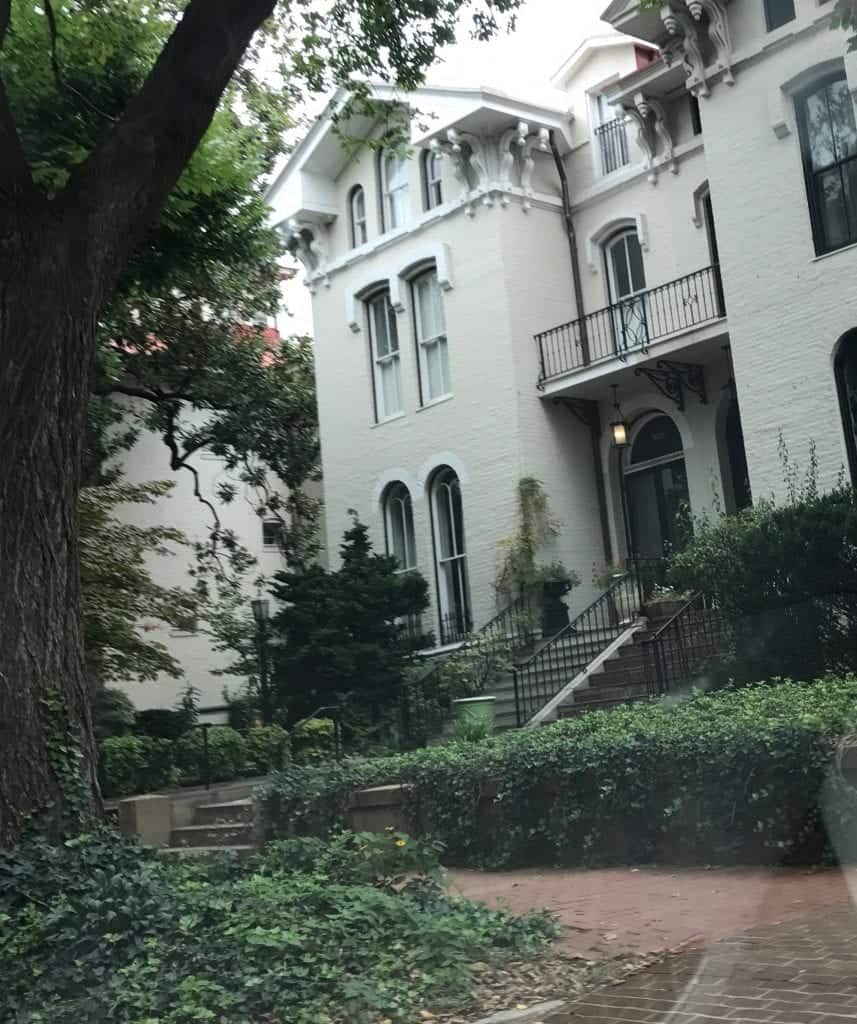
The beautiful homes you see on the right as standalone mini-mansions were all built by Henry Cooke and are known as Cooke's Row. Legend states that he built them all for his 12 children to keep them living nearby.
There are four double villas with alternative architectural styles. Cooke was a banker, railway entrepreneur and was appointed in 1871 by President Grant to be the first territorial governor of District of Columbia.
They were completed in 1868 and a local newspaper reported that "each contain... two parlors, connected with sliding doors, a library, a dining room, butler's closet, servant's hall, and stairs, with all modern improvements and appurtenances (besides the spacious hall and stairs opening on tasty porches) in the principal stories which are twelve feet high in the clear.
The kitchens which are located in the basement, are ample, and communicate directly with the butler's closet, adjoining the fine dining room, by means of a dumb-waiter. The kitchen and butler's closets have every convenience and are supplied with hot and cold water as also are the bathrooms in the second stories.
The second story of each house, 11 feet high, contains four fine chambers, closets, water closets, bathroom, dressing room, servants' hall stairs, etc. while the attics have each 4-5 good chambers. There is a cellar under each house its entire size."
Walk a little further down the street to 3027 Q St NW
3027 Q St NW
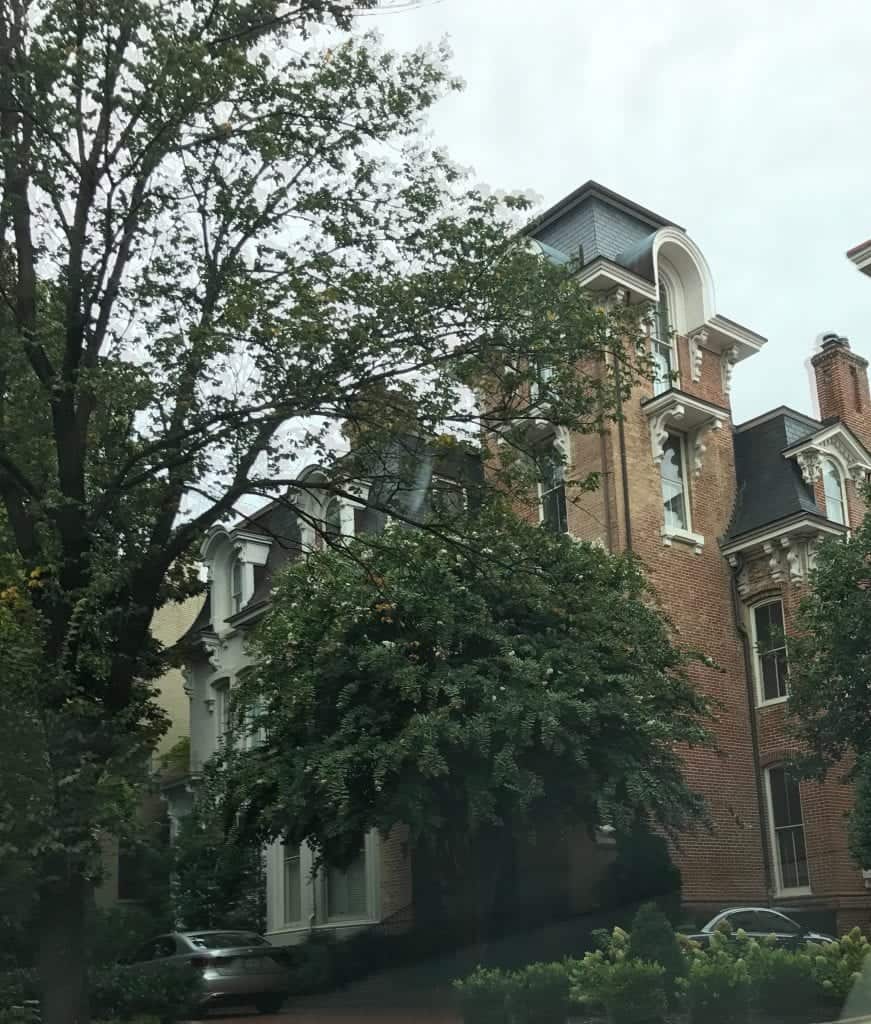
This is the home of Bob Woodward. Keep in mind it is a private resident and respect his privacy.
Bob Woodward was a reporter for the Washington Post during the Watergate Scandal that led to the resignation of President Nixon. Growing up, Woodward's parents didn't want him to become a journalist, thinking it wouldn't be a successful career.
Across the river in a parking garage in Rosslyn, Virginia is where Woodward and fellow reporter Carl Bernstein met with an information known as Deep Throat, who has now been revealed as FBI agent Mark Felt.
At the time Woodward was living in Dupont Circle and would communicate with Felt on the time to meet with secret codes, like moving a plant on the balcony to a different corner or circling a certain page on the morning newspaper. Woodward would write about his historic time in his book, All the President's Men.
Backtrack down Q St NW to the corner of M and 30th St NW. There is a beautiful Southwestern looking building on the far corner.
1527 30th St NW
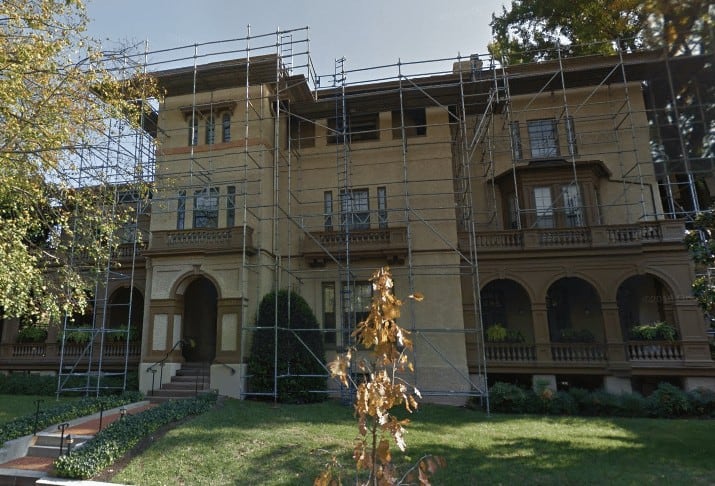
Today, this is a multi unit residents but it was initially built by Francis Dodge. No relation to Dodge Motor Company. The elder Francis Dodge was a wealthy shipping merchant, you can still see some of the Dodge Warehouses down by the Potomac River.
Francis Dodge, Sr had 11 children and two of his sons would have homes built on Q Street.
This particular house was for Francis, Jr. Both homes were built by the design team, Andrew Jackson Downing and Calvert Vaux. Eventually, this home would be purchased by Henry Cooke, so you can see how closer it is to the homes he supposedly built for his children.
Continue down Q Street NW and turn left on 29th. Just past the corner on the right is a large brick building.
1617 29th St NW
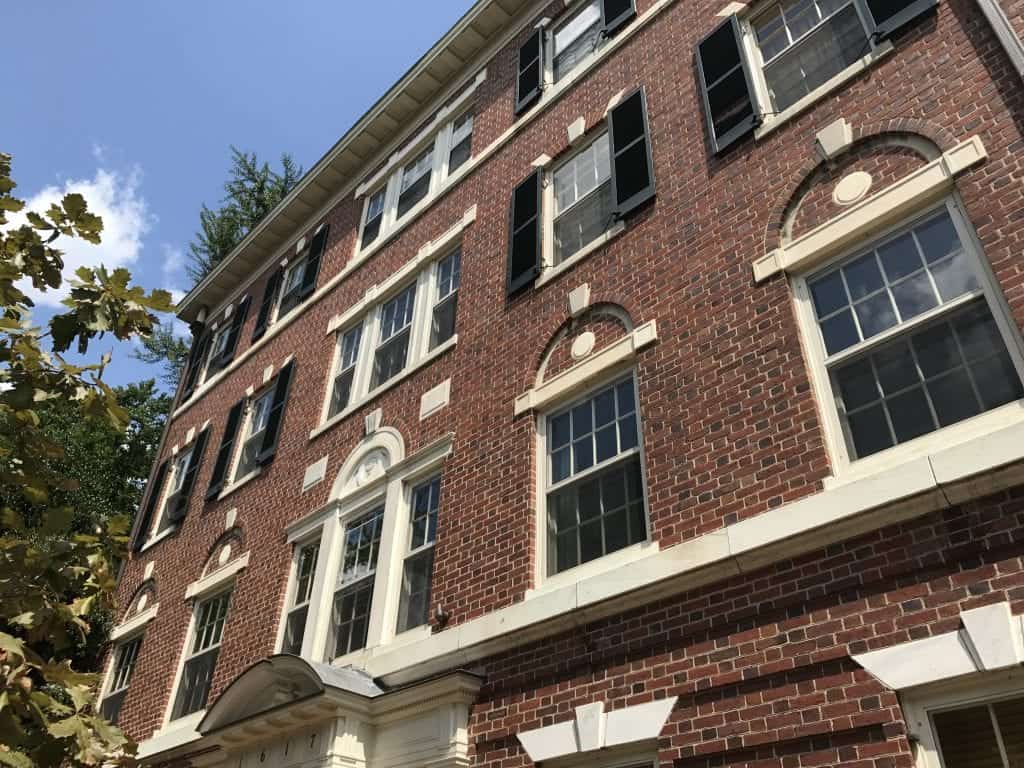
This brick house was built in 1911 for Hermann Hollerith.
Though his punch card machine is obsolete today you likely can picture what I'm talking about. His tabulating company would eventually merge with three other companies and be renamed International Business Machines (IBM).
He had an office down by the C&O Canal, the site of which is marked by a historic marker dedicated by modern day IBM.
Return to Q St NW and turn left.
2815 Q St NW
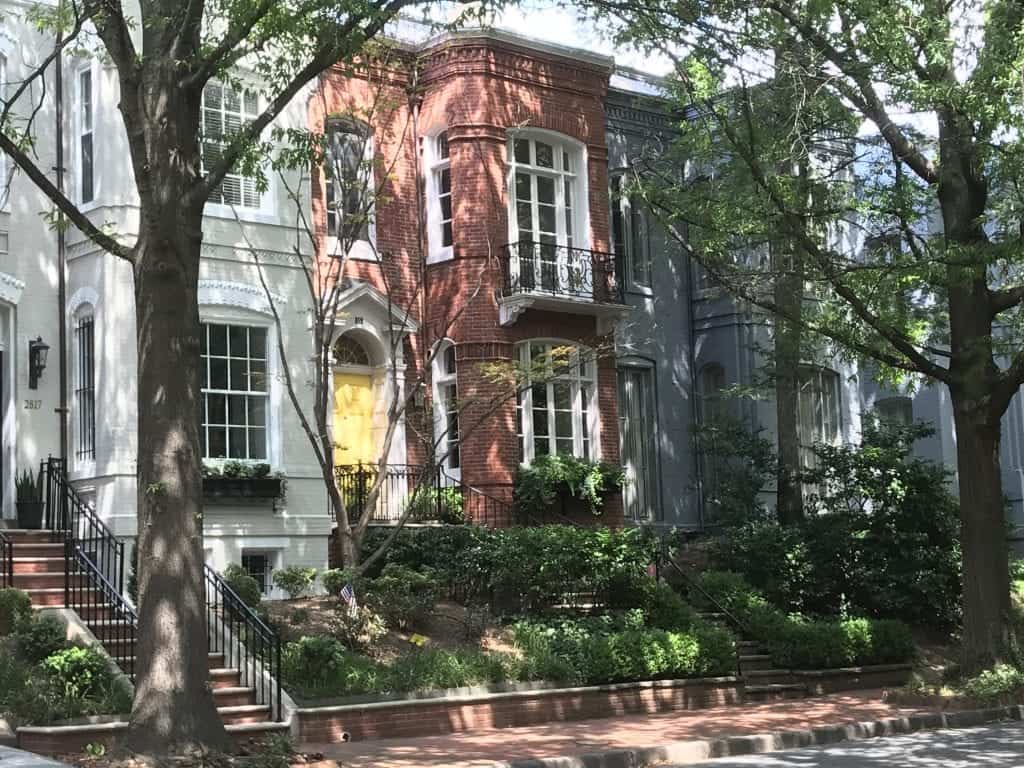
As of writing and for the last few years the house had a yellow front door.
This was the home of Marvin Hamlisch. He as an American composer, and one of few people to earn an - Emmy, Grammy, Oscar and Tony, commonly called EGOT. But in addition, he also earned a Pulitzer Price.
He wrote the scores for The Sting (surely you've heard the Entertainer), The Way We Were, "Nobody Does It Better" for the Spy Who Loved Me, A Chorus Line, and the original opening credits for Good Morning America.
While living in Georgetown he was conductor of the National Symphony Orchestra Pops. The story is he decided to give up this Georgetown residence so he could live in a hotel, where he could get ice cold Coca Cola delivered to his room at 2am.
Continue to the corner of Q and 28th St NW. There is a large columned home on your right.
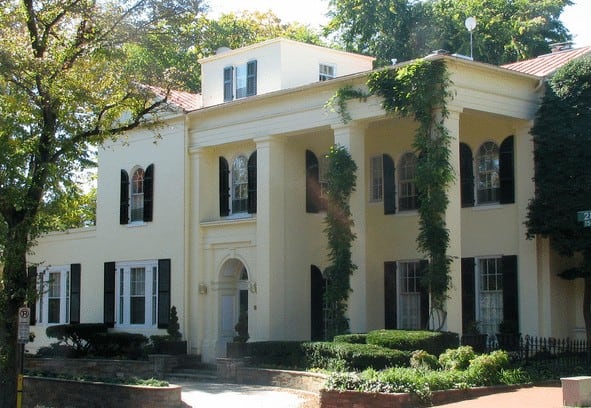
This is the second Dodge house on Q St NW, belonging to Robert Dodge. He was a engineer on the C&O Canal, founding member of the Georgetown Gas Light Company, owner of the Columbia Flour Mill, and paymaster in the Union Army.
Despite his family's loss in the shipping business, he had his hands in so many ventures he remained financially stable throughout his life.
Turn right down 28th St NW. Stop at the white picket fence on your right.
1524 28th St NW
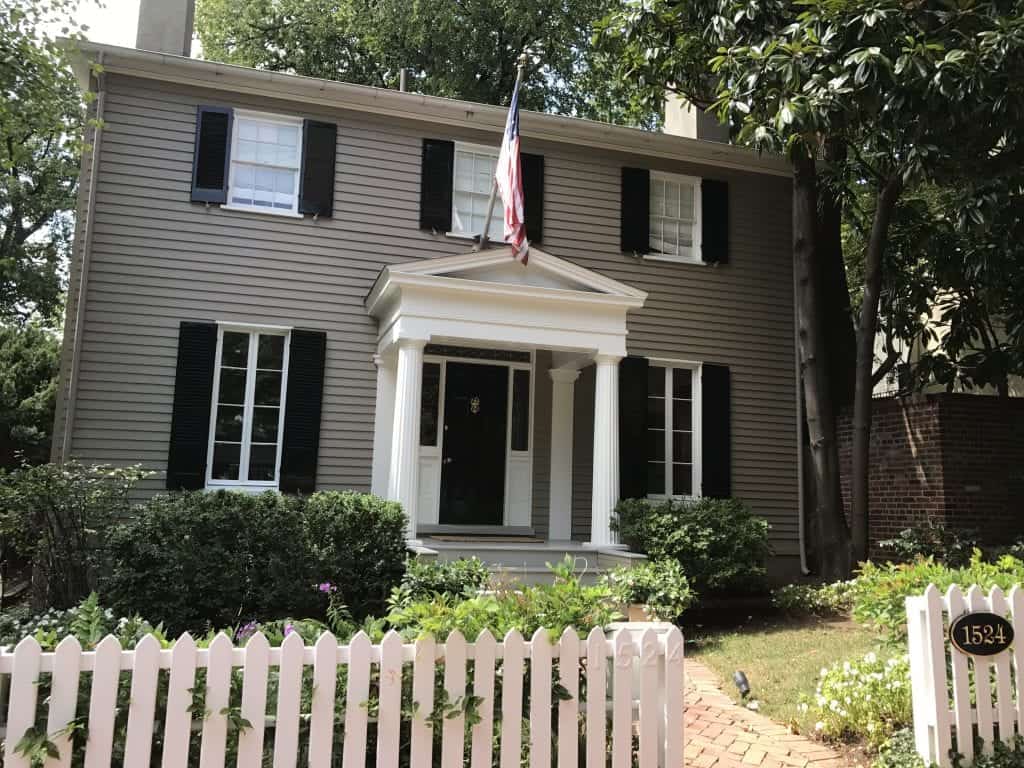
This quaint cottage like home is one of few remaining wooden structures. Standalone wooden homes in this area were all built before 1871.
After the Great Chicago Fire, it was decided not to build wooden homes in dense urban areas. This particular house was built by 1846. The process to date such an old house is interesting. By 1846 this particular lot in Georgetown had a dwelling.
And it cannot be older than 1843 because a Mr. Bennett Clements had a right to remove crops on that lot, so we can only surmise the house was built between 1843 and 1846.
The modest home was built by Benjamin Miller who was the master-carpenter and superintendent of the Potomac Aqueduct nearby.
Continue down 28th Street and stop at the iron fence on the corner of P St NW.
Gun Barrel Fence
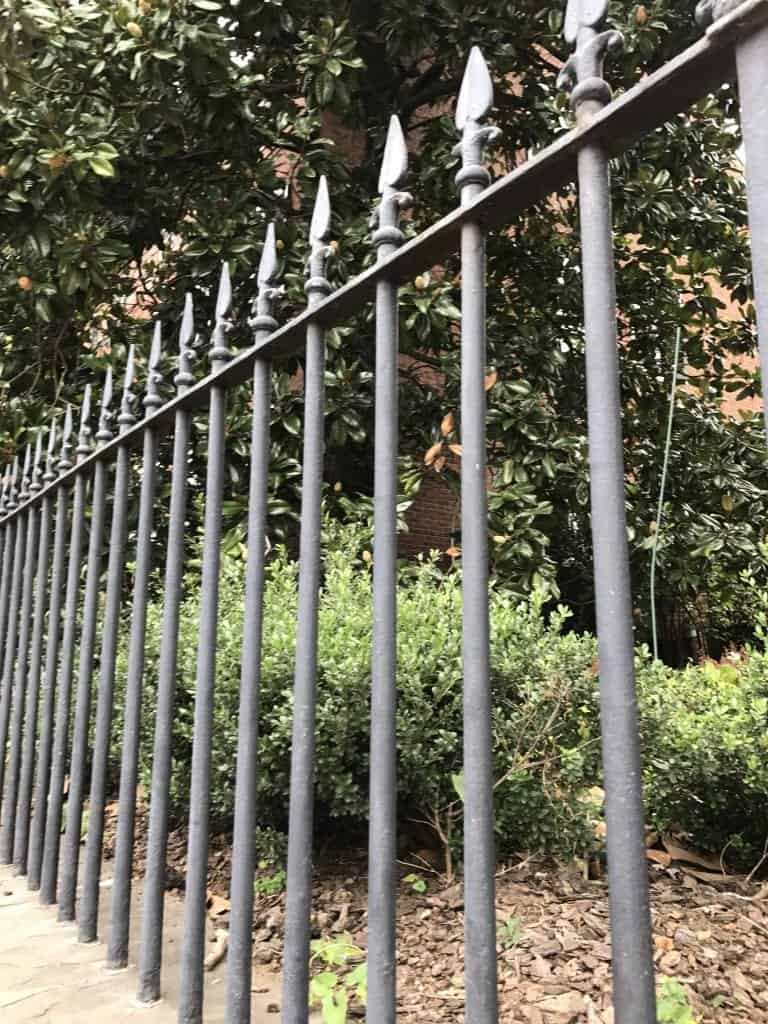
This fence on the corner seems rather typical for this area. With iron foundries just a few blocks down by the river, there are many wrought iron additions to homes. This fence however is supposedly different.
The owner of the home in the early 1800s was a man named Reuben Daws. He had lent the government money during the War of 1812 and when they couldn't repay, they offered him (and others) free reign of the Navy Yard to take what we wanted in the way of castings.
He found a pile of old British muskets, said to be surrendered during the Revolutionary War, and turned them into a fence. If you look closely, you'll notice the points are inserts and some of the barrels still have their old iron sights.
If you look across the street at 2808 P St NW, you'll see the house the John F. Kennedy lived in in 1957. For more about the Kennedy's in Georgetown, take our Historic Georgetown walking tour.
Cross 29th street and go a few houses down but don't go to fast or you'll miss the next stop
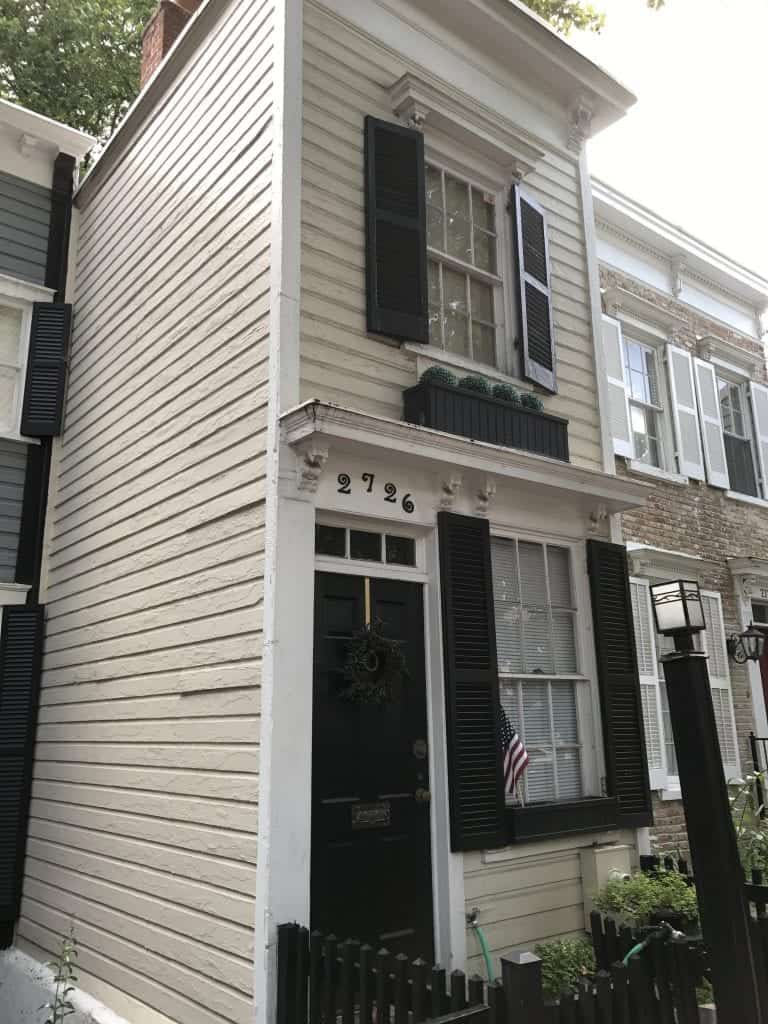
At 2726 P St NW, you'll see the smallest house in Georgetown. At 8 feet wide, this is called a Spite House. These are very popular up and down the East Coast and often joked that they were built to block the sun or fresh air of a neighbor.
This house wasn't actually built out of spite, though. In the 1870s, it was an extension of the house to the right. You can see the cornices at the top overlap.
Head back to 29t and turn left for one block. You'll see a large church across the street.
Mount Zion United Methodist Church

The Mount Zion United Methodist Church is Washington's oldest black-American congregation. In 1816, the black members of Dumbarton Street Methodist Episcopal Church left to start Mount Zion United Methodist Church. These 125 black parishioners were both enslaved and free.
The church's nearby cemetery, further up 29th Street by Dumbarton House, is said to have been part of the Underground Railroad. An old vault was unlocked so runaway enslaved persons could hide while passage further north was arranged.
Across the street from the church at 1339, you'll see what looks to be a large home with a central door. This is an example of the changes in Georgetown. These were original three separate row houses built in 1700s and combined in 1937 to make one family home.
Continue down 29th Street and cross M St NW then right right. At the corner of 30th and M is our next stop.
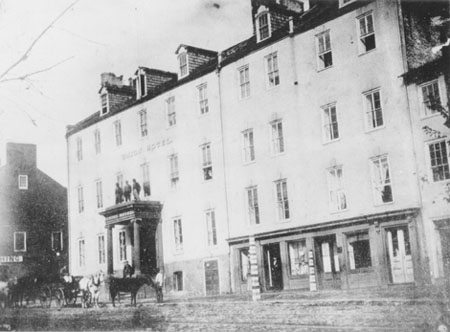
Site of Union Hotel
Though the building is no longer standing and this southwest corner of 30th and M Street NW is currently under construction, this was the site of the Union Hotel. Originally called the Crawford Hotel, it was used as a hospital and boarding house during the Civil War and obtained a new name.
It was here that a young nurse named Louise May Alcott would volunteer. She would not be able to serve long before she got ill herself and would return home to New England to write Little Women.
Built in 1796 it was one of the grandest hotels in the area, but it was razed in 1932 in order to build a gas station.
Continue down 30th Street to the C&O Canal
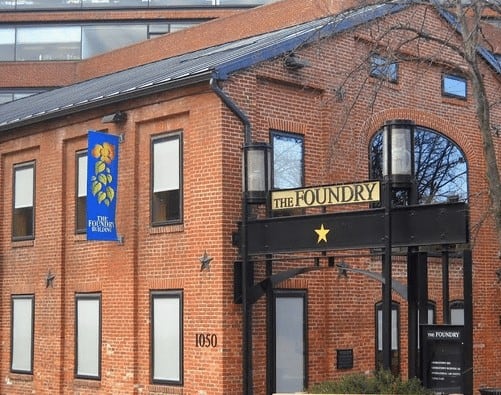
Duvall Foundry
The large brick building on the southwest corner of 30th and the canal is part of a modern facility called The Foundry.
This building on the corner was built as Duvall Foundry. The government in the early 19th century decided that a national foundry in the area would be beneficial. With the Potomac River, the C&O Canal and the B&O Railroad it would be easy to ship goods, especially iron, in and out.
The Duvall Foundry began in 1856 and made muskets for the Union Army during the American Civil War.
The building still stands as a testament to Georgetown's days as an industrial powerhouse. Along the canal and river, were foundries, kilns, and mills. As the Potomac River and then canal silted up and ships grew larger and could not come this far inland, the industry started to leave Georgetown.
Today all that is left is the name of the area condos on the waterfront that remind us what this buildings used to be.
We end the tour here on the C&O Canal, not far from M St NW. You can easily make your way back to the main street for some shopping lunch or head to the Metro Station at Foggy Bottom. But we hope you'll stick around and join us for our Historic Georgetown walking tour, which starts just a few blocks from here at the Waterfront Park at 31st and K St NW.






